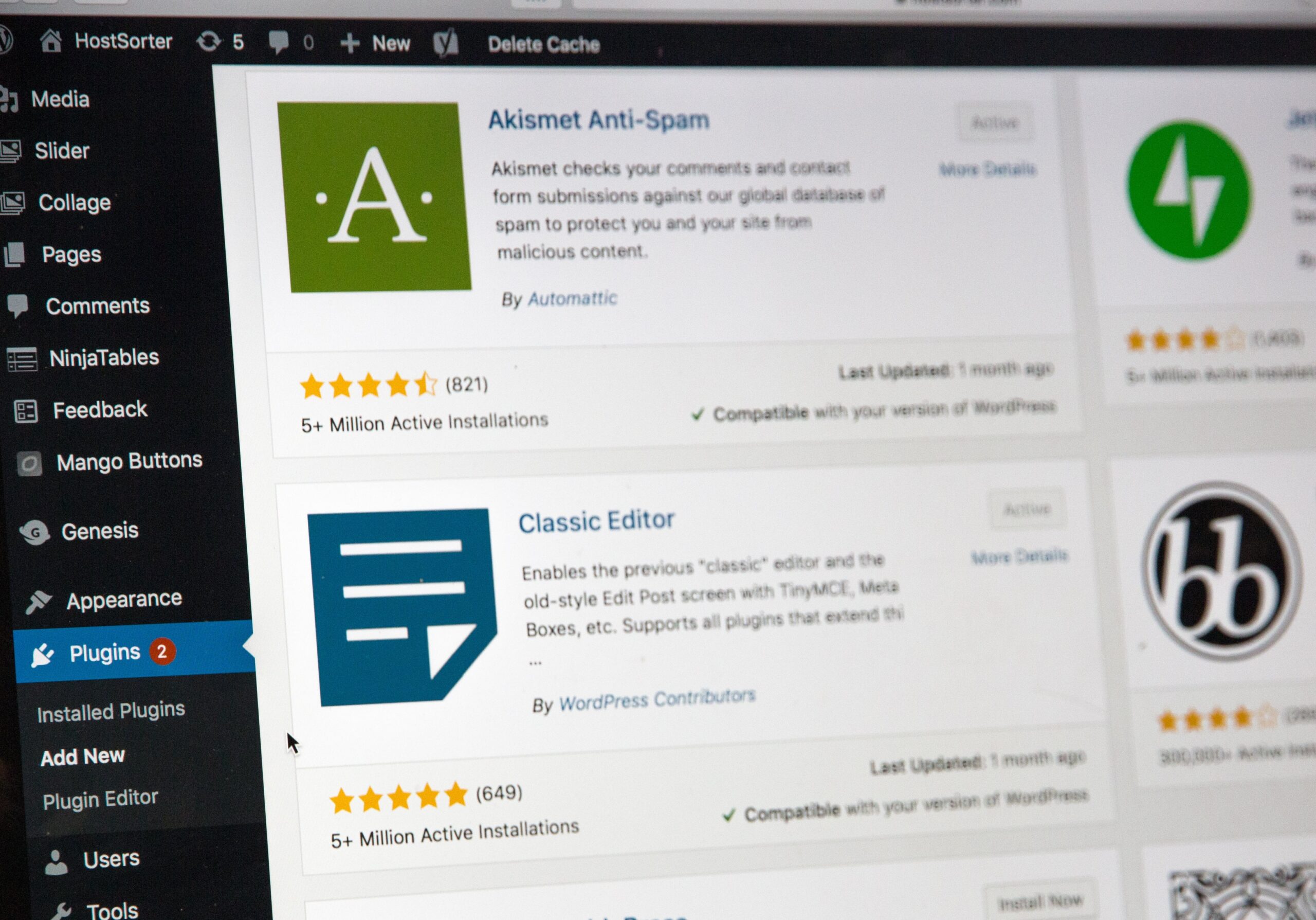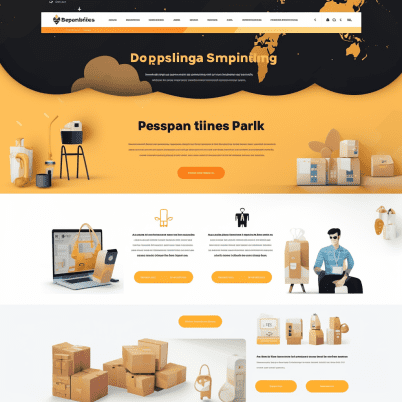In the fiercely competitive online market, having a well-optimized WordPress ecommerce optimization website is critical to achieving success. With the right strategies and techniques, you can significantly enhance your website’s performance, attract a larger organic audience, and ultimately boost your sales. This comprehensive blog post will guide you through a range of effective ways to optimize your WordPress ecommerce optimization website, maximizing its potential for growth and success.

Choosing the Right WordPress Ecommerce Theme
The foundation of your WordPress ecommerce optimization website lies in the theme you choose. Opting for a theme specifically designed for ecommerce, with a focus on responsiveness, user experience, and SEO-friendly features, will set you on the path to success.
Look for themes that offer extensive customization options, optimized speed performance, and compatibility with popular ecommerce plugins. A visually appealing and intuitive theme that aligns with your brand image and product offerings will enhance the overall user experience and drive engagement.

Enhancing Website Speed and Performance
Website speed plays a critical role in user experience and search engine rankings. Slow-loading websites lead to higher bounce rates and decreased conversions. Optimize your WordPress website by compressing images, minifying CSS and JavaScript files, utilizing caching plugins, and choosing a reliable hosting provider.
Regularly monitor your website’s performance using tools like Google Page Speed Insights or GT Metrix to identify and rectify any speed-related issues. Additionally, consider implementing a content delivery network (CDN) to improve loading times for users located in different geographic regions.
Implementing Effective On-Page SEO Techniques
On-page SEO is the practice of optimizing individual web pages to rank higher in search engine results. It involves a range of techniques, including keyword research, optimizing meta tags, creating descriptive URLs, and utilizing header tags effectively. Conduct thorough keyword research to identify relevant keywords and strategically incorporate them into your content, titles, headings, and image alt tags.
Ensure proper internal linking within your WordPress ecommerce optimization to establish a logical site structure and enhance user navigation. Additionally, focus on creating high-quality, original content that provides value to your target audience while aligning with their search intent.
Optimizing Product Descriptions and Images
Compelling product descriptions and visually appealing images are crucial for engaging potential customers and improving SEO. Craft unique and informative product descriptions that highlight the features, benefits, and unique selling points of each product. Incorporate relevant keywords naturally within the descriptions. Additionally, optimize product images by compressing them without compromising quality and adding descriptive alt tags. Optimized images not only improve the user experience but also contribute to better search engine visibility.
Leveraging User-Generated Content
User-generated content, such as reviews and testimonials, is a powerful tool for enhancing trust and boosting SEO. Encourage customers to leave reviews and testimonials on your website or social media platforms. Display this content prominently, leveraging social proof to enhance your WordPress ecommerce optimization website’s credibility and increase conversions. Additionally, consider implementing a Q&A section or a community forum where users can ask questions, engage with your brand, and generate valuable content.
Building High-Quality Backlinks
Backlinks from authoritative and relevant websites can significantly impact your WordPress ecommerce optimization website’s SEO. Focus on creating valuable content that others would naturally want to link to. Engage in guest blogging opportunities, influencer collaborations, and outreach campaigns to earn high-quality backlinks.
Guest blogging allows you to showcase your expertise, reach a wider audience, and build relationships with industry influencers. Additionally, participate in relevant online communities, contribute to discussions, and share your content to attract backlinks from interested users.
Improving Mobile Responsiveness
With the increasing dominance of mobile usage, having a mobile-responsive WordPress ecommerce optimization is imperative. Choose a responsive theme and ensure that your WordPress ecommerce optimization looks and functions flawlessly across different devices and screen sizes.
Optimize images and use responsive design techniques, such as fluid grids and media queries, to provide a seamless user experience. Conduct thorough testing on various mobile devices to identify and fix any layout or functionality issues.
Streamlining the Checkout Process
A complicated and lengthy checkout process can lead to cart abandonment and lost sales opportunities. Streamline the checkout process by enabling guest checkouts, providing multiple secure payment options, and minimizing the number of form fields. Incorporate trust signals, such as security badges, customer reviews, and money-back guarantees, to instill confidence in your customers. Additionally, offer a progress indicator to guide users through the checkout steps, simplify the shipping and billing address entry, and optimize the loading speed of the checkout pages.
Utilizing Analytics to Track Performance
Utilize powerful analytics tools, such as Google Analytics, to gain valuable insights into your website’s performance. Monitor metrics such as traffic sources, conversion rates, bounce rates, average order value, and customer demographics. Analyze this data to identify areas of improvement and make informed decisions to optimize your ecommerce website further.
Track the effectiveness of your marketing campaigns, the performance of individual product pages, and the behavior of your website visitors to refine your strategies and enhance the overall user experience.
Continuous Testing and Optimization
Optimization is an ongoing process that requires continuous testing and refinement. Implement an iterative approach by testing different strategies, monitoring the results, and refining your approach accordingly. Conduct A/B testing on various elements such as headlines, calls-to-action, layouts, pricing, and product placement to determine the most effective options for improving conversions and user experience.
Regularly analyze user feedback, review website analytics, and stay up to date with industry trends to identify new optimization opportunities. By continually your WordPress ecommerce optimization website, you can stay ahead of the competition and ensure its long-term success.
Conclusion
Boosting your WordPress ecommerce optimization services and development requires a comprehensive and multifaceted approach. By implementing the strategies outlined in this extensive blog post, you can significantly enhance your website’s performance, attract a larger organic audience, and drive higher conversions.
Remember to choose a theme tailored for ecommerce, optimize website speed and performance, implement effective on-page SEO techniques, optimize product descriptions and images editing, leverage user-generated content, build high-quality backlinks, improve mobile responsiveness, streamline the checkout process, utilize analytics to track performance, and continuously test and optimize your website.
Stay up to date with the latest trends and best practices in WordPress ecommerce optimization to remain competitive in the ever-evolving digital landscape. Ultimately, providing an exceptional user experience while adhering to search engine guidelines will be the key to your WordPress ecommerce optimization success.




